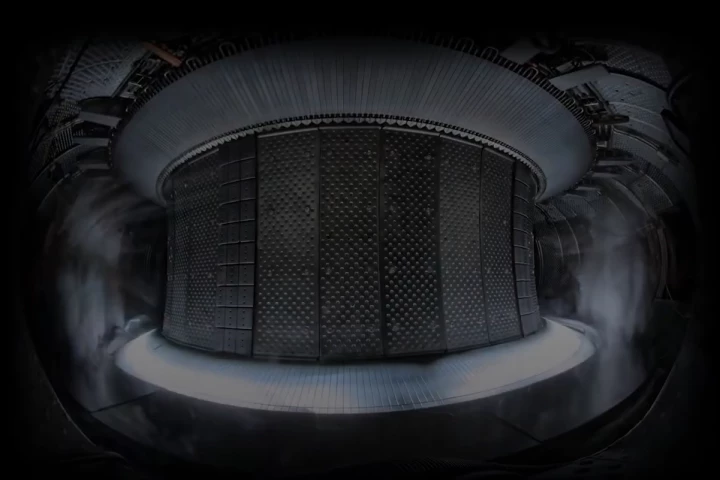Backcountry Containers has designed lots of different types of shipping container homes, from large residential units to smaller rural retreats. For its Luke tiny house, the firm connects a large and a small shipping container together, offering a surprisingly spacious interior layout that sleeps up to two people in comfort.
The Luke is based on a 40-ft (12.2-m) high-cube shipping container and a 20-ft (6.1-m) model, which have been welded together, modified with doors and windows, and painted a uniform blueish color. It measures 480 sq ft (45 sq m), which is arranged on one floor.
Thanks to the additional width provided by using two containers, the interior has a spacious open-plan layout, avoiding the usual issue of container-based houses seeming very cramped. Another major concern with living in what's essentially a big metal box is the terrible thermal performance, so to mitigate this the firm has added spray foam insulation in the walls and ceiling. A wall-mounted mini-split air-conditioning unit is installed too.

The front door (there's also a door installed at the rear of the home) opens onto the living room, which occupies the center of the home. It has enough space for a sofa and a coffee table and TV. The kitchen is nearby. This includes butcher block countertops, cabinetry, some shelving, a sink, and space for a fridge/freezer and other appliances.
Situated to one side of the living room is the bathroom. This actually looks relatively well-proportioned for a container-based tiny house and has a shower, flushing toilet, a vanity sink, and a washer/dryer.

The other side of the living room, meanwhile, is occupied by the bedroom. It's accessed by a barn-style sliding door and, thanks to the home's single floor layout, has ample headroom to stand up and move around. It contains a double bed.
The Luke has a lot of optional extras available, including the choice of materials used inside, the exterior cladding, a rooftop deck, wood-burning stove, appliances, and more.
This model starts at US$125,000.
Source: Backcountry Containers











